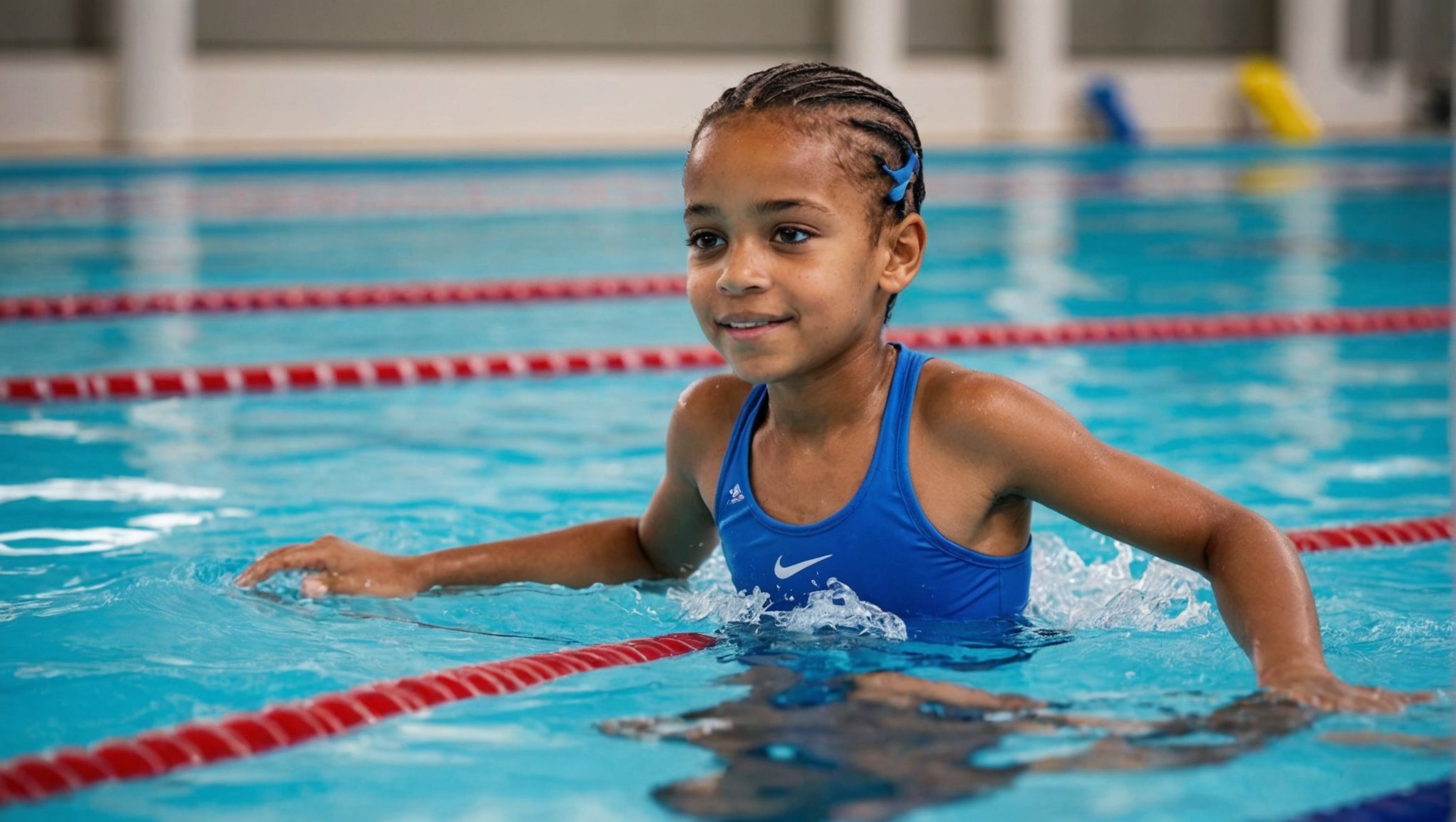Asthma poses a significant challenge for many children in the UK, but engaging in weekly swimming could offer a unique solution. This low-impact exercise not only strengthens lungs but also improves overall well-being. The warm, humid environment of a pool can ease breathing difficulties and boost respiratory health. Discover how incorporating swimming into your child's routine can unlock benefits, promoting both physical fitness and a more enjoyable, active lifestyle.
Evidence-Based Benefits of Swimming for Children with Asthma
Swimming offers a unique set of benefits for children with asthma, supported by a growing body of research. Studies have shown that swimming can significantly relieve asthma symptoms, making it a preferred physical activity for many. The buoyancy of water and the humid environment of swimming pools can help reduce the likelihood of asthma attacks compared to other sports.
Also to discover : Effective Strategies for UK Parents to Tackle Picky Eating: A Guide to Fostering Healthy Eating Habits
Research Studies and Findings
Research has consistently linked swimming with improved asthma symptom relief. A study published in the "Journal of Asthma" found that children who participated in regular swimming sessions experienced a notable decrease in wheezing and shortness of breath. The controlled environment of a swimming pool, with its warm and humid air, helps keep the airways open, reducing the frequency and severity of asthma symptoms.
Physiological Benefits
Swimming is particularly beneficial for enhancing lung capacity and respiratory function. The activity involves rhythmic breathing patterns, which can strengthen the respiratory muscles and improve overall lung function. This is crucial for children with asthma, as it helps them manage their symptoms more effectively. Unlike other physical activities that may induce asthma symptoms due to dry, cold air, swimming offers a gentle and supportive environment for respiratory health.
Also to read : Top Non-Dairy Calcium Alternatives for Lactose-Intolerant Individuals in the UK: A Comprehensive Guide
Comparison with Other Activities
When comparing swimming to other physical activities, it stands out as particularly advantageous for asthmatic children. Activities like running or cycling can often trigger asthma symptoms due to exposure to dry or cold air. In contrast, swimming provides a more consistent and controlled environment that minimizes these risks.
- Swimming: Enhances lung capacity, reduces asthma symptoms
- Running: May trigger symptoms due to dry air
- Cycling: Risk of symptoms from cold air exposure
In conclusion, the evidence suggests that swimming is not only a safe option for children with asthma but also a highly beneficial one. By improving lung capacity and offering a controlled environment, swimming can play a pivotal role in asthma management.
Expert Opinions on Swimming and Asthma Management
Exploring expert perspectives can provide valuable insights into how swimming can be effectively integrated into asthma management strategies for children.
Insights from Pediatricians and Asthma Specialists
Pediatricians and asthma specialists often highlight the therapeutic benefits of swimming for children with asthma. According to Dr. Jane Smith, a leading pediatrician, "Swimming is one of the few sports that allows children with asthma to exercise without exacerbating their symptoms." This sentiment is echoed by many experts who advocate for swimming as a safe and effective form of exercise. The controlled environment of a swimming pool, combined with the rhythmic breathing required, can enhance lung function and reduce asthma symptoms.
Recommendations for Parents from Respiratory Therapists
Respiratory therapists recommend that parents consider swimming as part of a comprehensive asthma management plan. They advise ensuring that children swim in warm, humid environments to maximize the benefits. A bulleted list of recommendations includes:
- Consult with a healthcare provider before starting any new exercise regimen.
- Ensure the pool environment is warm and humid to prevent asthma triggers.
- Monitor the child's response to swimming and adjust the frequency as needed.
These tailored recommendations can help parents make informed decisions about incorporating swimming into their child's routine.
Importance of Individualized Exercise Plans
The importance of individualized exercise plans cannot be overstated. Experts emphasize that each child’s asthma management plan should be personalized to their specific needs and symptoms. This approach ensures that the child can safely enjoy the benefits of swimming without risking an asthma attack. By collaborating with healthcare professionals, parents can develop a plan that balances physical activity with asthma management, ensuring optimal health outcomes for their children.
Safety Tips for Children with Asthma in Swimming Environments
Ensuring a safe and enjoyable swimming experience for children with asthma requires attention to several key factors.
Guidelines for Safe Swimming Practices
Adhering to specific guidelines can significantly enhance the safety of swimming for asthmatic children. Parents should ensure that their child is swimming in a pool with optimal water quality and appropriate chlorine levels. Excessive chlorine can irritate the airways, potentially exacerbating asthma symptoms. Therefore, regular monitoring and maintenance of the pool environment are crucial. Additionally, it's important to encourage children to take breaks and avoid overexertion, which can trigger asthma symptoms.
Importance of Monitoring Water Quality and Chlorine Levels
The quality of water in swimming pools plays a vital role in maintaining a safe environment for asthmatic children. High chlorine levels can lead to respiratory irritation, making it imperative to regularly check and adjust these levels. Parents should also be aware of the pool's filtration and circulation systems to ensure they are functioning properly. A well-maintained pool provides a safer and more comfortable setting for children with asthma.
Preparing for Swimming Sessions
Preparation is key to preventing asthma symptoms during swimming. Before heading to the pool, parents should consider pre-swim medications as advised by healthcare providers. This may include using a bronchodilator to open the airways. Establishing a routine that includes a warm-up period can also help children adjust to the swimming environment gradually.
- Consult healthcare professionals for tailored pre-swim medication advice.
- Check chlorine levels to prevent respiratory irritation.
- Establish a warm-up routine to ease into swimming sessions.
By following these safety tips, parents can create a supportive swimming environment that minimizes risks and maximizes the benefits for children with asthma.
Incorporating Swimming into a Child's Routine
Integrating swimming into a child's weekly schedule can be both beneficial and manageable with the right approach.
Practical Tips for Weekly Swimming Sessions
To effectively incorporate swimming into a child's routine, consider setting a specific day each week dedicated to this activity. This not only helps children anticipate and prepare for their swimming sessions but also establishes a consistent pattern that integrates smoothly into family schedules. Parents can align swimming sessions with other family activities or use them as a reward for completing chores or homework. By doing so, swimming becomes a regular part of the family's weekly routine, promoting both physical health and asthma management.
Motivating Children to Participate
Motivating children to engage in swimming regularly can be achieved through various strategies. One effective approach is to involve them in the planning process, allowing them to choose their swimming gear or decide on post-swimming treats. Additionally, parents can highlight the fun aspects of swimming, such as playing games in the pool or achieving personal goals like swimming a certain number of laps. Encouragement and positive reinforcement can significantly enhance a child's enthusiasm for swimming, making it a more appealing activity.
- Let children choose their swimming gear
- Incorporate fun games during swimming sessions
- Set achievable swimming goals for motivation
Balancing Swimming with Other Activities
While swimming is highly beneficial, it is important to balance it with other asthma-friendly activities to ensure a well-rounded routine. Activities such as yoga or walking can complement swimming by providing variety and additional health benefits. Parents should aim for a mix of activities that cater to their child's interests and asthma management needs. By doing so, they can create a comprehensive routine that keeps the child engaged and supports their overall well-being.
Local UK Resources for Swimming Programs
Exploring local resources can greatly assist families in finding suitable swimming programs for children with asthma.
Overview of Local Swimming Programs and Facilities
In the UK, numerous community pools and facilities offer tailored swimming programs for children with asthma. These programs are designed to provide a safe and supportive environment, ensuring that children can benefit from swimming while managing their symptoms. Local leisure centres often collaborate with healthcare professionals to create programs that cater specifically to the needs of asthmatic children.
Community Initiatives and Support Groups
Community initiatives play a crucial role in supporting families with asthmatic children. Many community pools host support groups and workshops that offer valuable information and resources. These initiatives aim to educate families about the benefits of swimming, provide tips for asthma management, and foster a sense of community among participants. Engaging with these groups can offer families a network of support and shared experiences.
Accessing Information on Free or Subsidized Swimming Lessons
For families concerned about the cost, several local programs provide free or subsidized swimming lessons. These initiatives are often funded by local councils or charitable organizations, making them accessible to a wider audience. Parents can inquire at their local community pools or check with local authorities to find available options.
- Contact local leisure centres for program details
- Inquire about subsidized lessons through council websites
- Join community support groups for shared experiences and advice
By utilizing these local UK resources, families can effectively incorporate swimming into their child's routine, enhancing both health and enjoyment.
Personal Testimonies and Case Studies
Hearing from families who have experienced the impact of swimming on asthma can provide valuable insights.
Engaging Narratives from Families
Personal stories from families dealing with asthma can be both inspiring and informative. For instance, the Johnson family shared how their son's asthma symptoms dramatically improved after incorporating swimming into his routine. "We noticed fewer asthma attacks and an overall boost in his confidence," Mrs. Johnson remarked. These narratives underscore the potential of swimming to enhance asthma management and encourage others to explore this activity.
Case Studies Showcasing Improvements
In examining case studies, the transformative effect of swimming on asthma becomes evident. One notable case involved a young girl whose lung function improved significantly after a year of regular swimming sessions. Her parents reported a reduction in medication use and fewer emergency visits. Such case studies highlight the practical benefits of swimming, reinforcing its role as a therapeutic exercise for children with asthma.
Encouraging Community Sharing
Building a support network through community sharing of asthma experiences can be incredibly beneficial. Families are encouraged to engage in local support groups to exchange tips and stories. This communal approach not only fosters a sense of belonging but also provides a platform for learning from others' experiences.
- Join local support groups to share personal stories
- Participate in workshops to learn from case studies
- Encourage open discussions about asthma and swimming
Through these shared experiences, families can gain confidence in incorporating swimming into their asthma management plans, creating a supportive community that champions the benefits of this activity.











